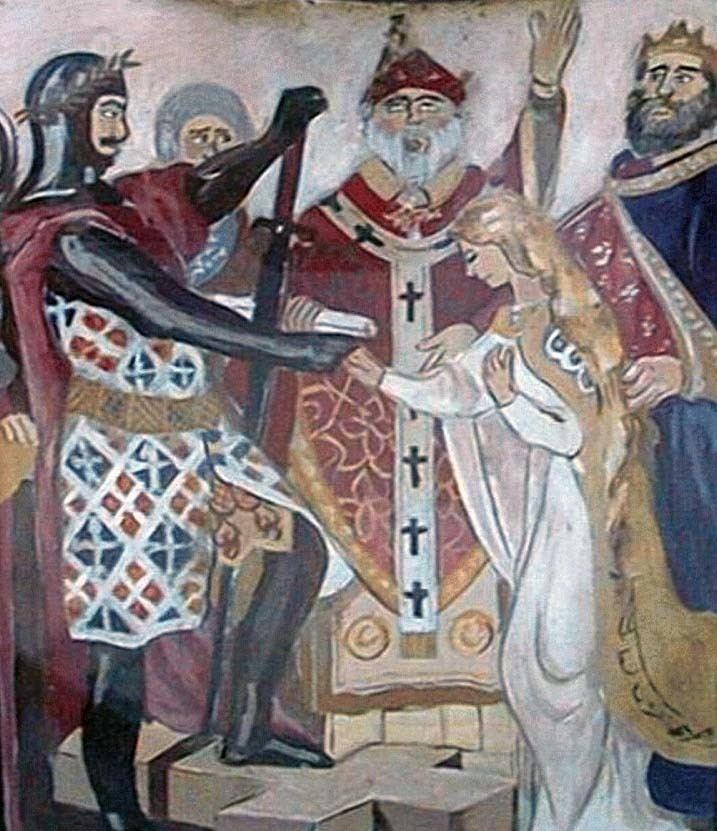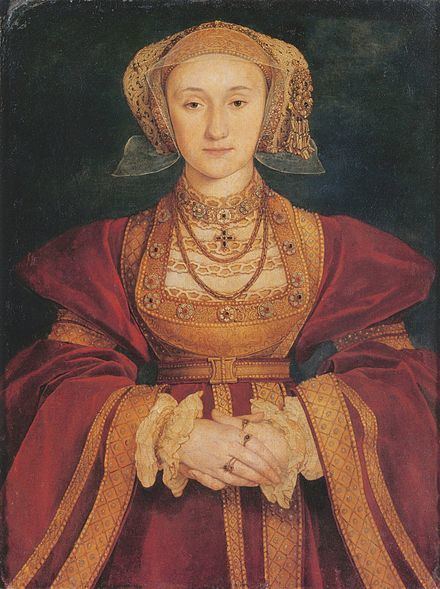Father Dermot MacMurrough Mother Mor O'Toole | Died 1188 | |
 | ||
Noble family MacMurrough-Kavanagh family Parents Diarmait Mac Murchada, Mor Ni Tuathail Grandchildren Isabel Marshal, Maud Marshal, Eva Marshal Similar People Diarmait Mac Murchada, Isabel de Clare - 4th Countess, Isabel Marshal, William Marshal - 1st Earl of | ||
Aoife MacMurrough (c. 1145 – 1188, Irish: Aoife Ní Diarmait), also known by later historians as Eva of Leinster, was an Irish noble, princess of Leinster and countess of Pembroke. She was the daughter of Dermot MacMurrough (c. 1110 – 1171) (Irish: Diarmait Mac Murchada), King of Leinster, and his second wife (the Brehon law of Ireland allowed a man to have two wives in secular marriage) Mor O'Toole (c. 1114 – 1191), a relation of St Lawrence O'Toole.
Contents

Life

As the daughter of a Gaelic king, the young Aoife would have been raised in much higher dignity than most other girls in Ireland who were of poorer stock than her; her privileged status ensured that she was educated in the law of the land and would have ensured that she was literate in Church-Latin (the native Irish language which she spoke in was not written). Since her mother (who also produced one son and another daughter) was the second wife of Diarmait, her station was automatically lower than that of her husbands first wife, Sadb Ní Faeláin, and her issue of two sons and one daughter. It has been asserted by some historians that the children of the second wife were illegitimate as per the European laws which specified that marriage was a contract between one man and one woman and until the death of either party - this was not the case in Ireland, where the law allowed two wives, trial marriages and where divorce was quite normal. In fact, Aoife's brother Domhnall, would in actuality succeed their father to the kingship of Leinster once elected upon his decease.
On the 25 August 1170, following the Norman invasion of Ireland that her father had requested, she married Richard de Clare, 2nd Earl of Pembroke, better known as Strongbow, the leader of the Norman invasion force, in Christchurch cathedral in Waterford. Her father, Dermot MacMurrough, who was seeking a military alliance with Strongbow in his feud with the King of Breffney, Tiernan O'Ruark, had promised Aoife to Pembroke. However, according to Brehon law, both the man and the woman had to consent to the marriage, so it is fair to conclude that Aoife accepted her father's arrangements.
Under Anglo-Norman law, this gave Strongbow succession rights to the Kingdom of Leinster. Under Irish Brehon law, the marriage gave her a life interest only, after which any land would normally revert to male cousins; but Brehon law also recognised a transfer of "swordland" following a conquest. Aoife led troops in battle and is sometimes known as Red Eva (Irish: Aoife Rua).
She had two sons and a daughter with her husband Richard de Clare and through their daughter, Isabel de Clare, within a few generations their descendants included much of the nobility of Europe including all the monarchs of Scotland since Robert I (1274–1329) and all those of England, Great Britain and the United Kingdom since Henry IV (1367–1413); and, apart from Anne of Cleves, all the queen consorts of as well as Henry VIII.
Death
While the exact date of the death of Aoife of Leinster is unknown (one suggested year is 1188), there is in existence one tale of her demise. As a young woman, she lived many years following the death of Strongbow in 1176, and devoted herself to raising their children and defending their territory. She had a fortress tower constructed at Cappamore where she was to conduct a feud with the Quinns. One day, while walking in the grounds of Cappamore, she was shot through the throat by one of the Quinns while talking with the captain of her guard. Her remains were interred in the crypt of Kilkenny Castle.
